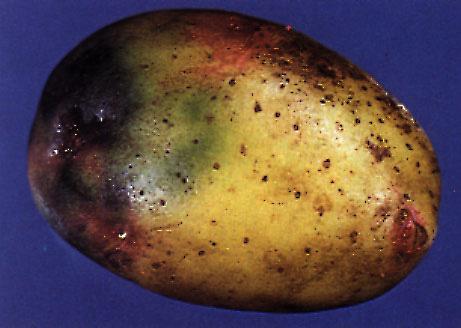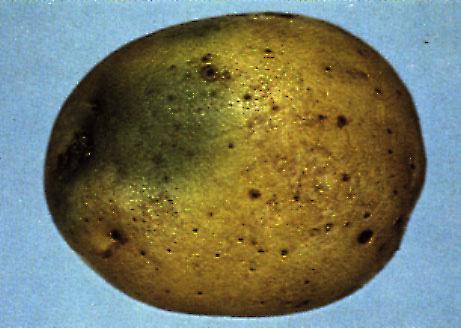Potatisknölen är en stamdel och kan, i motsats till rötterna, bilda klorofyll om knölen utsätts för ljus. Klorofyllbildningen medför, att knölen grönfärgas. Grönfärgning, som uppkommit under odlingen (odlingsgrönfärgning) är i regel intensiv och på ytan klart begränsad till den del av knölen, som legat ovanför markytan.
Grönfärgning, som uppstått under upptagning, sortering eller lagring (lagringsgrönfärgning) är mer jämnt utbredd över den för ljuset exponerade ytan. Vid sidan av klorofyllbildningen orsakar ljuset en ökning av TGA (solanin och chaconin), vilket ger knölen en besk smak.


Greening
The potato tuber is a part of the stem and can, unlike the roots, form chlorophyll if the tuber is exposed to light. The formation of chlorophyll leads to the tuber turning green. Greening which occurs during growth (greening in field) is as a rule strong, and on the surface is clearly confined to the part of the tuber, which protrudes above the level of the ground.
Greening which arose during, grading or storage (greening in storage) is more evenly distributed over the surface that was exposed to the light. In conjunction with the formation of chlorophyll, the light causes an increase in the solanine content, giving the tuber a bitter taste.